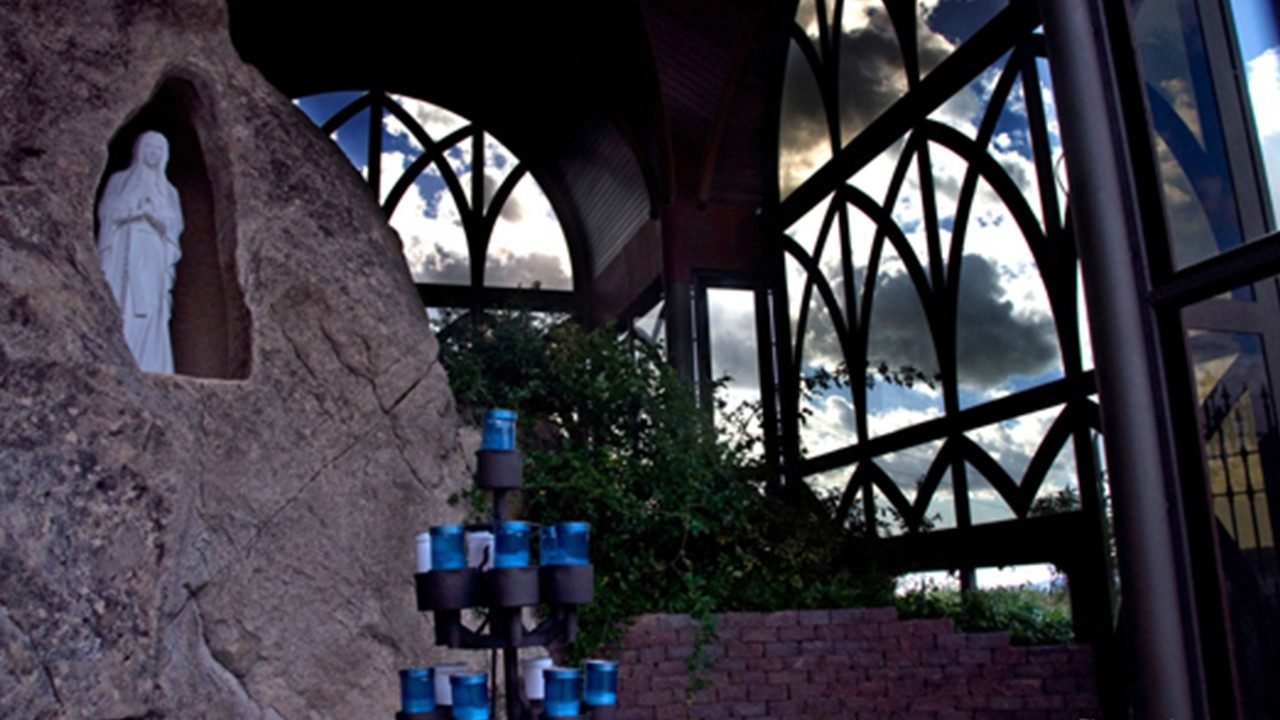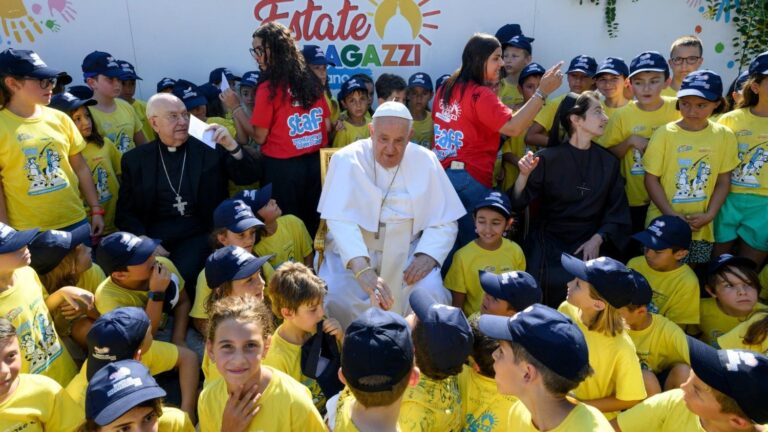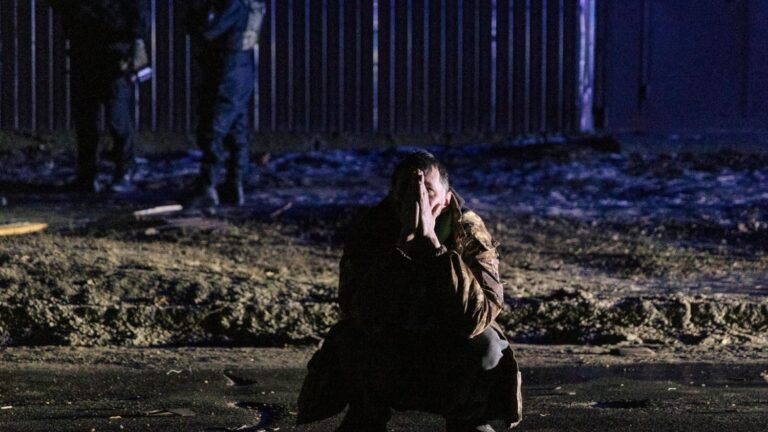Dicastery for the Doctrine of the Faith issues ruling on Our Lady of the Rock
Based on the new norms on the alleged apparitions, the Dicastery for the Doctrine of the Faith has published its decision on the spiritual fruits deriving from the alleged apparitions to Cosimo Fragomeni in Calabria.
Vatican News
“In the secularized world in which we live, in which so many people spend their lives without any reference to transcendence, the pilgrims who approach the Shrine of the Rock are a powerful sign of faith,” writes Cardinal Victor Manuel Fernández.
In response to a question from the Bishop of Locri-Gerace, Francesco Oliva, the prefect of the dicastery for the doctrine of the faith, in a letter dated June 3, “confirms the No problem” proposed by the prelate regarding the events around the diocesan sanctuary of Our Lady of the Rock (“Madonna dello Scoglio”) in Santa Domenica di Placanica, in Calabria.
Recognition of an experience of the Spirit
It was there, on May 11, 1968, that the Virgin Mary is said to have appeared for the first time to Cosimo Fragomeni, a humble 18-year-old peasant. According to the new Norms published by the Dicastery for the Doctrine of the Faith on May 17 – recalled by Cardinal Fernández in his letter – the no objection “should not be understood as an endorsement of the supernatural character of the phenomenon” but rather as a recognition of the “spiritual experience” proposed for the sanctuary.
The diocesan bishop is therefore encouraged to appreciate the pastoral value and to promote the diffusion of this spiritual proposal, “in particular through pilgrimages, gatherings and prayer meetings”, while “the faithful are authorized to give their adherence” to these events “in a prudent manner”.
A place to encounter God’s mercy
According to Cosimo, the alleged visionary, the first apparition in 1968 was preceded by a ray of light coming from a sandstone rock near the young man’s house, which repeated itself for the following four days.
In the messages reported by Cosimo, the Virgin invites conversion and prayer, expressing the desire to see the Calabrian town transformed into a great center of spirituality where people can encounter God’s mercy. Cosimo cleared the area around the rock, made an embankment and extracted sandstone to make a niche in which to place a marble Marian statue, purchased in Carrara.
From a simple chapel to a diocesan sanctuary
The site quickly became a pilgrimage destination for all of Italy and even abroad. At first it was a simple chapel, but the growing influx of pilgrims led to the construction of a large sanctuary.
In the meantime, in 1987, Cosimo became a Franciscan tertiary.
On December 7, 2008, the then Bishop of Locri-Gerace, Giuseppe Fiorini Morosini, decreed that the religious reality of the “Madonna dello Scoglio” be placed under the pastoral protection of the diocesan bishop.
In 2013, on May 22, during the general audience in St. Peter’s Square, Brother Cosimo, accompanied by Bishop Morosini, asked Pope Francis to bless the first stone of the “Scoglio” sanctuary under construction. Three years later, on February 11, 2016, the new Bishop of Locri-Gerace, Francesco Oliva, elevated the place of worship to the rank of “diocesan sanctuary” under the title of “Our Lady of the Rock”. The following year, on July 10, 2017, he entrusted its pastoral care to the Missionaries of Evangelization.
The Obvious Fruits of the Christian Life
In his letter, Cardinal Fernandez emphasizes that the shrine “has aroused the interest of many other faithful from different backgrounds, especially those who suffer and are sick.”
He notes that “over the years the place has attracted more and more faithful and pilgrimages under the supervision of the competent Ordinary”, which has led to “an intense spiritual activity of prayer and listening”.
Cardinal Fernandez then quotes the words of Bishop Oliva: “The fruits of Christian life in those who frequent the Rock (that is, the sanctuary) are evident, such as the existence of the spirit of prayer, conversions, some vocations to the priesthood and religious life, testimonies of charity, as well as healthy devotion and other spiritual fruits.” However, “no critical or risky elements have emerged, much less problems of evident gravity.”
Bishop Oliva’s request
In a letter sent last June to the Dicastery for the Doctrine of the Faith, Msgr. Oliva had proposed the no objection as “the recognition necessary to continue to operate in such a way that those who visit (the Shrine) can feel comforted and encouraged to continue, knowing that they are in communion with the Catholic Church.”
In his response, Cardinal Fernandez writes: “In this regard, this Dicastery takes note of your positive report on the spiritual good that takes place in the (Shrine), over which you exercise constant vigilance so that there is no manipulation of people, undue financial gain or serious doctrinal errors that could cause scandal, harm the faithful or undermine the credibility of the Church.”
Fernandez: The veneration of Mary in a clear Christological perspective
The Cardinal recalls that “the correct veneration of Mary, Mother of Jesus, Mother of the Church and our Mother, must be expressed in such a way as to exclude inappropriate forms of veneration and the use of improper Marian titles. Instead, it is appropriate to venerate in a clear Christological perspective, as the ecclesial Magisterium teaches: ‘when the Mother is honored, the Son (…) is rightly known, loved and glorified'” (Gentium Light66).
The presence of pilgrims before the Virgin, “which becomes for them a clear expression of the Lord’s mercy,” the cardinal writes in conclusion, “is a way of recognizing their inability to carry out the efforts of life and their ardent need and desire for God. In such a precious context of faith, a renewed proclamation of the kerygma can continue to illuminate and enrich this experience of the Spirit.”
The decree of the Bishop of Locri-Gerace
At the same time as the publication of the letter of the Dicastery, the decree of the Bishop of Locri-Gerace was published, which establishes the nothing else “for the pastoral value of this spiritual proposal as well as for its dissemination, in particular through possible pilgrimages, gatherings and prayer meetings.”
The faithful “are authorized to give” their adherence, “in a prudent form”, to the “above-mentioned devotion”. This does not, however, imply “a declaration of the supernatural character of the phenomenon” and “the faithful are not obliged to believe in it”.
Any further messages from those concerned will only be made public after the bishop’s judgment.
At the same time, Bishop Oliva invites the faithful to attend a solemn celebration planned at the sanctuary on the afternoon of August 5.






